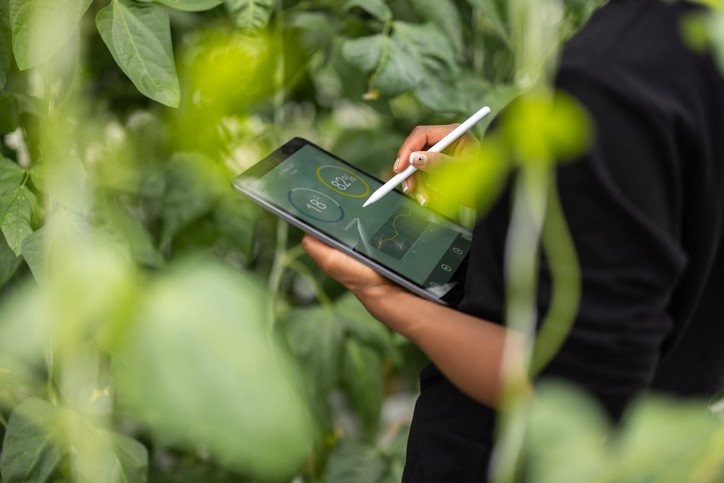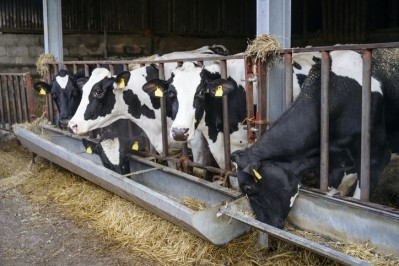Climate-smart ag projects get millions in funding from USDA

The US Department of Agriculture (USDA) backed Partnerships for Climate-Smart Commodities funding pool will increase the competitive advantage of US agriculture both domestically and internationally, while building wealth in rural America, according to US ag secretary, Tom Vilsack.
“There is strong and growing interest in the private sector and among consumers for food that is grown in a climate-friendly way,” he noted.
The overarching goal of the program is to expand markets for climate-smart commodities, leverage the greenhouse gas benefits of climate-smart commodity production and provide direct, meaningful benefits to production agriculture, including for small and underserved producers, said the USDA.
Reacting to the funding, Michael Dykes, CEO of the Washington based International Dairy Foods Association (IDFA), said that around US$700m has been committed by the USDA to voluntary, incentive-based efforts focused on supporting climate and conservation projects in dairy and dairy-related businesses, catapulting the US into a position of global leadership in climate-smart food and agricultural production.
Increased funding
Earlier this year, Vilsack announced that the USDA had allocated US$1bn for the program, divided into two funding pools. Because of the unprecedented demand and interest in the program, and potential for meaningful opportunities to benefit producers through the proposals, the Biden-Harris administration decided to increase the total funding allocation to more than US$3bn, with projects from the second funding pool to be announced later this year.
The USDA received over 450 proposals from more than 350 groups for the first funding pool, totaling over US$18bn in requests for funding, including from non-profit organizations; for-profits and government entities; farmer cooperatives; conservation, energy, and environmental groups; state, tribal and local governments; universities; small businesses; and large corporations.
The 70 selected projects announced on Wednesday this week were deemed by the jury to be the most competitive.
For applications in the first funding pool (US$5m to US$100m), projected greenhouse gas (GHG) benefits were weighted more heavily. For applications in the second funding pool (under US$5m), equity and outreach criteria will be weighted more heavily, reported the organization.
Feed, methane emissions reduction projects
We identified some of the feed and methane emissions reduction linked initiatives chosen for funding in the first round:
A project led by Tyson Foods is looking to expand climate-smart markets and increase carbon sequestration while reducing emissions in the production of beef and row crops for livestock feed. Small and underserved producers will receive technical assistance and incentive payments to increase their capacity to reduce emissions and adopt climate-smart practices.
McDonald's, Deloitte Consulting, and Bayer are some of the other partners involved in that project which has a funding ceiling of US$60m placed against it.
An initiative put forward by the US National Pork Board, which has also secured the involvement of Swiss group, Nestlé, among other partners, was awarded funding of up to US$20m. The project is aimed at increasing the sustainability of US pork products by advancing climate-smart agriculture practices within the feed supply, thereby maintaining market demand and price premiums in a rapidly evolving consumer world.
“The geography of focus – Minnesota, Iowa, and Missouri – encapsulates a concentration of pork facilities supported by local grain production, representing a key region of the overall supply chain.”
Funded to the tune of US$10m, a project led by Mississippi State University, and also involving Southern Ag Services, seeks to demonstrate the viability of growing climate-smart (CS) grains that are sold to poultry feed operations. “This project will develop a pilot program for grain producers to utilize multiple climate-smart practices to achieve greenhouse gas (GHG) reductions. The pilot program includes a monitoring /verification system, local climate-smart market opportunity for direct sale, and tracking CS grain to broiler operations.”
Looking to methane emissions reduction and an initiative being run by the California Dairy Research Foundation, backed by US$85m of those USDA funds, looks to provide financial incentives for dairy producers to adopt climate-smart manure management practices to reduce methane emissions.
Some US$45m in funding has been set aside for another methane emissions busting project, this time one run by Dairy Farmers of America (DFA). Climate-smart pilots will directly connect on-farm greenhouse gas reductions with the low-carbon dairy market opportunity.
The DFA said it will use its cooperative business model to ensure that the collective financial benefits are captured at the farm, creating a compelling opportunity to establish a powerful self-sustaining circular economy model benefiting US agriculture, including underserved producers.
Other major partners in this initiative include Dairy One Cooperative, Inc, MyFarm, LLC, Dairy Nutrition Management and Consulting, LLC, Nestlé, Mars, Unilever, and Barry Callebaut.
And Pennsylvania State University is working with dairy producers in that state to implement climate-smart agriculture. Also participating in this exercise, that has secured US$25m of the USDA purse, are the Center for Dairy Excellence, Proagrica, Professional Dairy Managers of Pennsylvania, and Red Barn Consulting.
The partners say they are looking to establish successful and profitable partnerships between diverse producers, including underserved producers, and consumers, leading to a reduction of greenhouse gases, suppressing methane (CH4) and nitrous oxide (N2O) emissions, and storage of carbon.
Insights sharing
All of the projects are required to participate in a partnerships network, which will bring partners together virtually or in-person on a regular basis to share learnings.
The USDA outlined how it will summarize and publish information from those gatherings, as well as consolidated data from required project reporting.







